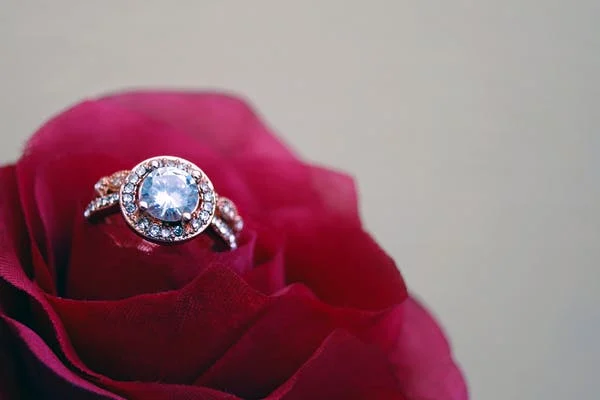8 Tips on How to Pick Good Lab Grown Diamond Engagement Rings
Diamonds are the perfect gift for a loved one. They are shiny, beautiful, and will last forever. But have you ever wondered what makes these diamonds so special? Diamonds are formed in the earth under extreme pressure and heat. The process of creating them can take millions of years.
However, there is another way to get your hands on these beauties: lab-grown diamonds! Lab-grown diamonds are created in a lab by replicating the same conditions that cause natural ones to form. This means that lab-grown diamonds are just as beautiful as their natural counterparts but without the wait time!
If you want to surprise your loved one with a gorgeous ring this holiday season, then read on for tips on picking out good lab grown diamond engagement rings!
Contents
1. Make Sure the Ring Is Certified
Lab-grown diamonds are beautiful, but they’re not necessarily rare. If you’re looking for a diamond that will stand out and make your eyes light up, make sure it’s certified by the International Gemological Institute (IGI) or the Gemological Institute of America (GIA). These certifications ensure that your diamond is natural and hasn’t been treated with chemicals or other methods to alter its color or appearance.
2. Know Your Lab-Grown Diamonds
Lab made diamond engagement rings are created in laboratories using techniques similar to those used by geologists to create gemstones. Because of this, lab-grown diamonds have the same chemical composition as natural diamonds. The difference between the two types of jewels is their formation process-natural diamonds form over millions of years due to intense heat and pressure deep beneath Earth’s surface; lab-created gems are created in seconds by scientists who use special processes to grow them from scratch.
There are four main types of lab-grown diamonds:
- Chatham
- D-colorless
- Fancy colored
- Forever one moissanite.
Each type has different characteristics regarding cut, carat size, clarity, color grade, and price point. So before you start shopping around for a lab-grown diamond engagement ring, make sure you know what kind of stone you want!
3. Go For Quality Over Quantity
While some people might be tempted to go for quantity over quality, we don’t recommend it. You want to buy from someone who can give you what you need: high-quality, durable jewelry that will last the rest of your life together. It doesn’t matter how many jewelry pieces they have; if none of them work for either of us, we’ll have to keep looking until we find something that does!
4. Consider Its Price Tag
While lab-grown diamonds might be less expensive than natural ones, they’re still very costly compared to cubic zirconium and other synthetic stones, so don’t expect them to be cheap! The good news is that most manufacturers offer financing options to spread out payments over time rather than having to pay everything upfront as you would with natural diamonds, which can cost thousands of dollars or more depending on their cut shape, color clarity, and carat weight, etc.
5. Consider the Color of Your Diamond
When looking at lab-grown diamonds, you’ll likely notice that the stones are more yellow than natural diamonds. That’s because natural diamonds are created through geological processes and contain trace amounts of nitrogen, which causes them to appear blue. Lab-grown diamonds have no such traces of nitrogen, so they tend to be a bit warmer and yellower in color.
However, if you’re looking for a warmer tone, this might be precisely what you want! Just keep in mind that if you prefer the look of a cooler tone, then a lab-grown diamond may not be right for you.
6. Consider the Cut
Lab-grown diamonds are cut into round brilliants or princess cuts-the same shapes as natural diamonds. The only difference is that they may appear slightly smaller due to their lack of flaws and impurities that make them larger than they would otherwise be. If you want your ring to look exactly like an expensive set but don’t want to spend thousands on an engagement ring with a round diamond center stone, this might be perfect!
7. Think About Color and Clarity
The color of lab-grown diamonds is measured on a scale from D to Z, with D being colorless and Z being yellowish or brownish. As with clarity, diamonds with lower color grades are more valuable than those with higher grades because they’re rarer and, therefore, harder to find in nature!
The clarity refers to how many imperfections are present in the diamond. Diamonds with fewer imperfections tend to be more valuable than those with more flaws because they’re rarer.
8. Know What Size Ring You Want
Another important factor in picking out an engagement ring is knowing what size ring you want before shopping for one. This is important because it will help ensure that the ring fits your finger properly when you arrive home! Most jewelers will have sizing charts available in their stores to measure your finger before ordering rings so that they will be sure that they fit correctly when they arrive at your home later down the road.”
Final Word
If you’re thinking about buying an engagement ring, you are probably already familiar with the traditional diamond. But did you know that you can now purchase lab-grown diamonds?
These beautiful gems are created in a laboratory, where they are made from a combination of carbon and other elements. They look and feel just like natural diamonds, but they’re much more affordable than their natural counterparts. This article has covered tips on picking a good lab-grown diamond engagement ring.




